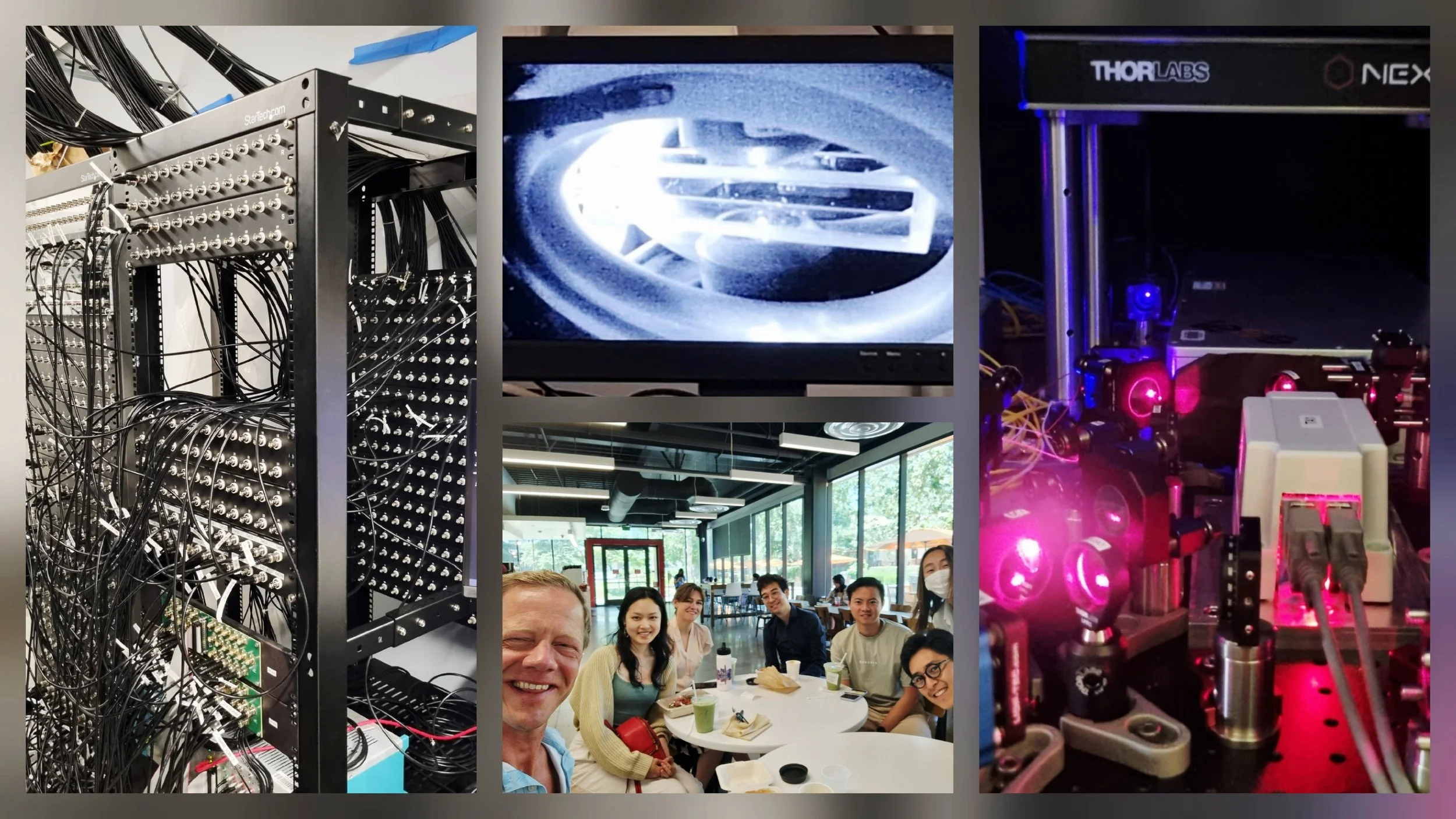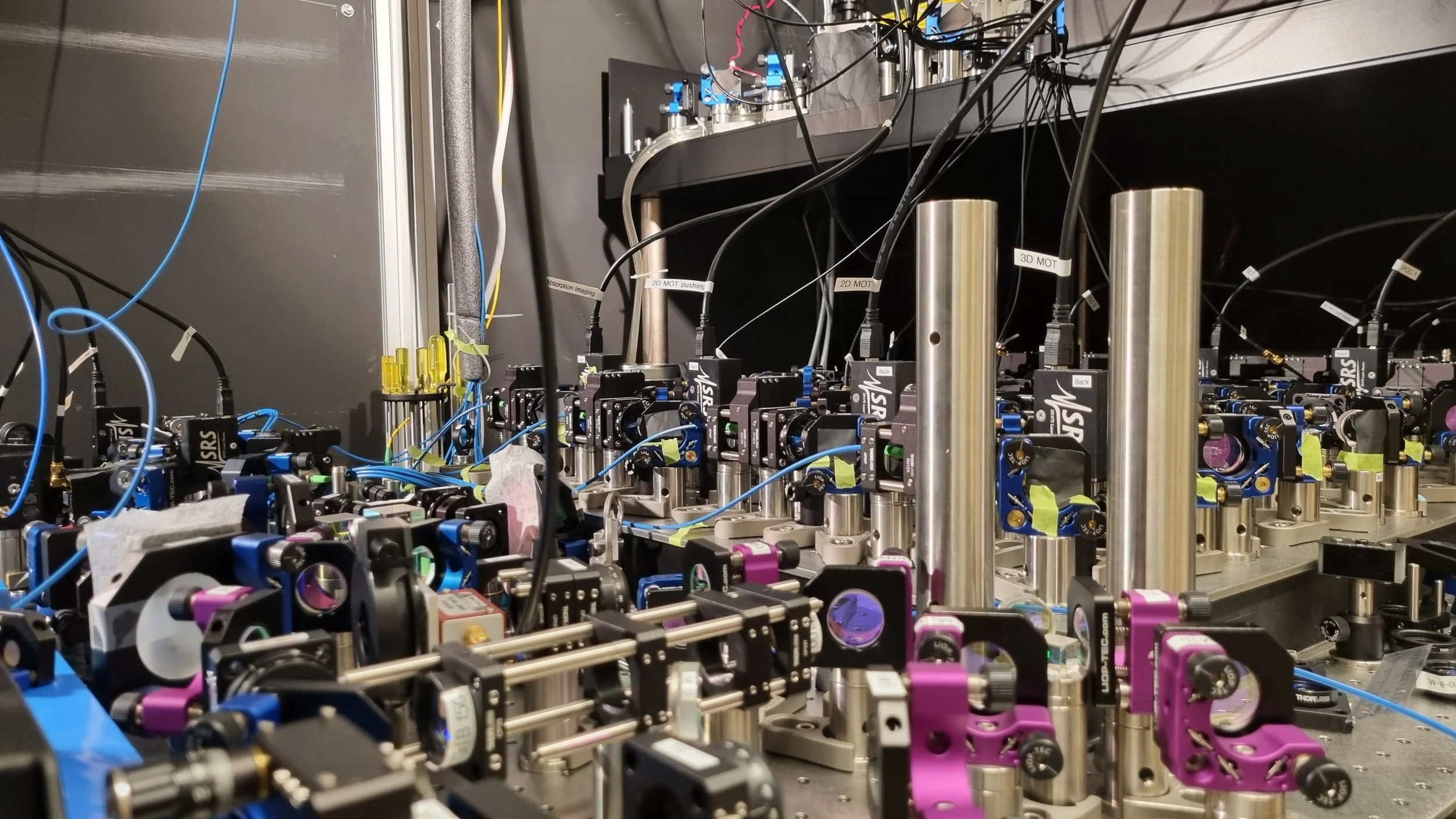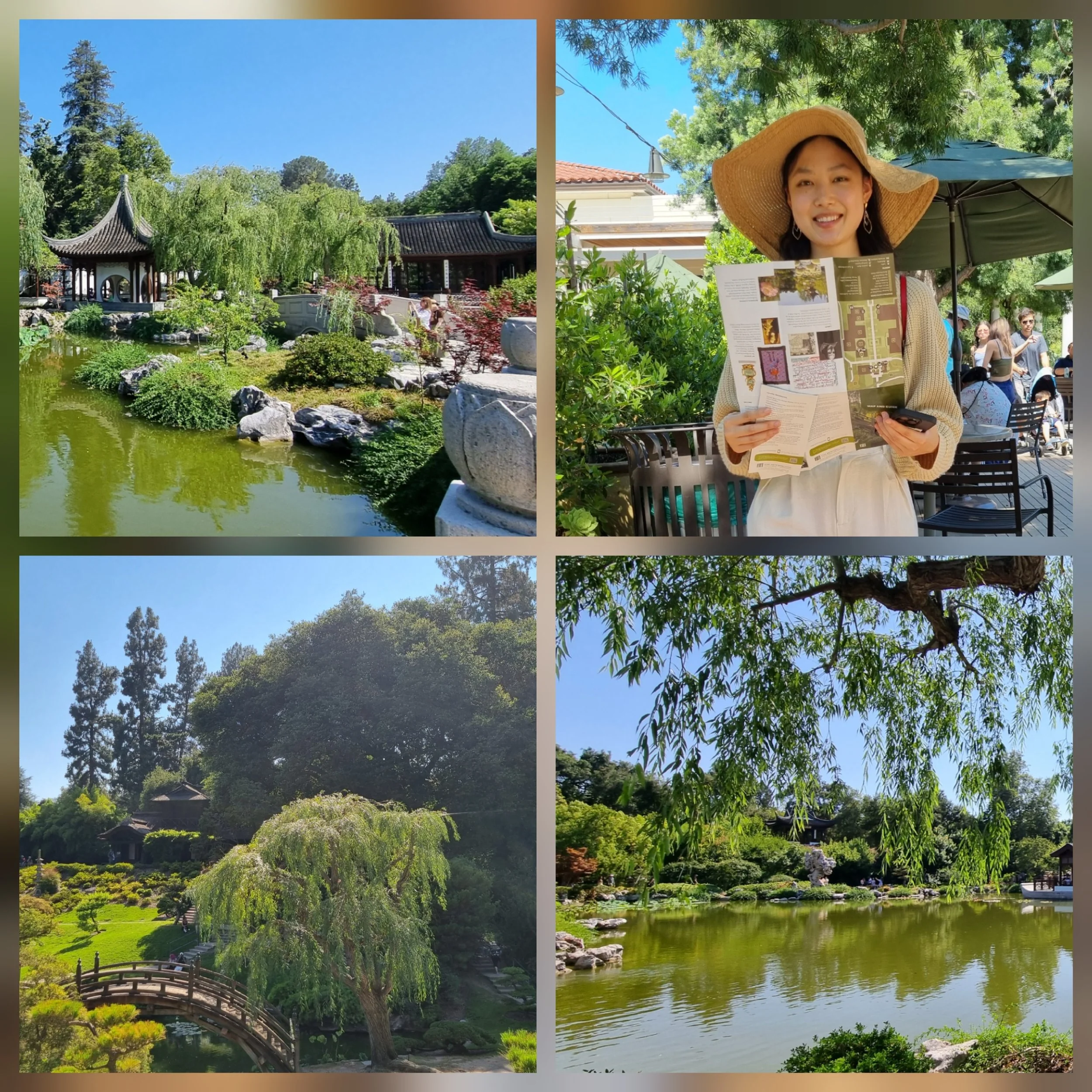Stanford Law’s Jin-Hee Lee, Katie Liu and Mauritz Kop visit Caltech Quantum Research Center
Pasadena, CA – On July 6, 2024, a team from the Stanford Center for Responsible Quantum Technology (RQT) embarked on a research field trip to the California Institute of Technology (Caltech), one of the world's preeminent hubs for quantum science research. This visit, part of an ongoing collaboration between the two world-leading institutions, was a crucial exercise in bridging the gap between the deeply technical world of quantum research and the complex legal, ethical, and societal frameworks required to govern it. The delegation, consisting of RQT Founding Director Mauritz Kop, RQT Fellow Jin-Hee Lee, and Research Assistant to the Director Katie Liu, traveled from Stanford to the heart of Southern California to engage directly with the scientists and engineers who are building the future of quantum. The visit was hosted by RQT Fellow Franz Pfanner, a PhD candidate at Caltech, and focused on the groundbreaking work being done at Caltech's Institute for Quantum Information and Matter (IQIM).
The day was dedicated to exploring the groundbreaking work being done at Caltech's Institute for Quantum Information and Matter (IQIM), a flagship research center led by Professor Manuel Endres, within the university's prestigious Division of Physics, Mathematics and Astronomy. This visit underscores the RQT Center's commitment to fostering a deeply interdisciplinary dialogue, ensuring that the development of responsible quantum governance is informed by a hands-on understanding of the technology itself.
The Stanford Center for Responsible Quantum Technology (RQT) and California Institute of Technology (Caltech) collaborate to bridge the gap between quantum research & development, and quantum governance & societal impact.
The Epicenter of Quantum Innovation: Caltech's IQIM
Caltech stands as a global powerhouse in quantum research, and at its core is the Institute for Quantum Information and Matter (IQIM). Under the leadership of Professor Manuel Endres, IQIM is dedicated to exploring the frontiers of quantum science, from the fundamental physics of quantum information to the development of novel quantum materials and devices. The institute's work is organized around several Major Activities (MAs), each tackling a different facet of the quantum puzzle.
During the visit, the Stanford team delved into these research areas, and was allowed access to futuristic quantum lab demonstrations, gaining invaluable insights into the state-of-the-art. They learned about MA-1: Quantum Information Physics, where researchers are developing innovative techniques like creating "classical shadows" of quantum states to predict their properties, and tackling profound theoretical questions like Tsirelson’s Problem, which probes the very nature of quantum correlations. In MA-2: Topological Quantum Physics, the focus is on exotic materials like graphene and the emerging field of "quantum straintronics," which could lead to new classes of electronic devices. And in MA-3: Quantum Dynamics, scientists are engineering nano-acoustic resonators with unprecedentedly long phonon lifetimes, opening up new possibilities for quantum sensing and information processing.
Stanford Law’s Jin-Hee Lee, Katie Liu and Mauritz Kop visit Caltech Quantum Research Center.
AWS Center for Quantum Computing at Caltech
A highlight of Caltech's quantum ecosystem is its landmark partnership with Amazon Web Services (AWS). The AWS Center for Quantum Computing, housed at Caltech, is a testament to the power of industry-academia collaboration. The center's ambitious goal is to build a fault-tolerant quantum computer, a machine that can correct its own errors and perform computations of a scale and complexity far beyond the reach of today's "noisy" intermediate-scale quantum (NISQ) devices. This collaboration is not only pushing the boundaries of what is scientifically possible but is also tackling the immense engineering challenges of scaling quantum technology, from developing novel qubit architectures to designing the complex cryogenic systems required to keep them stable.
The Stanford RQT team also had the opportunity to learn about the broader quantum landscape at Caltech, including the pioneering work of Professor John Preskill, a founder of the field of quantum information science, whose research on faster quantum algorithms and the classical verification of quantum computation is essential for building trust in these new machines. A recent and stunning achievement by Caltech researchers, the trapping of over 6,100 neutral atoms in optical tweezer arrays, was another key topic of discussion. This breakthrough represents a massive leap in the number of qubits that can be controlled and manipulated, setting a new standard for the field and paving the way for more powerful quantum simulators and computers.
The Endres Group at Caltech’s Institute for Quantum Information and Matter (IQIM) is dedicated to exploring the frontiers of quantum science, from the fundamental physics of quantum information to the development of novel quantum materials and devices, including the trapping of over 6,100 neutral atoms in optical tweezer arrays.
Bridging Quantum Theory and Society: The Stanford RQT Projects
The visit to Caltech provided a rich technical context for the work being done by the Stanford RQT team, whose projects are focused on the human and societal dimensions of this emerging technological revolution.
Jin-Hee Lee, an RQT Fellow, is pioneering research in the nascent field of Quantum Human-Computer Interaction (Q-HCI). Her project addresses a critical, yet often overlooked, aspect of the quantum future: how will humans interact with these powerful and counterintuitive machines? As quantum computers move beyond the binary logic of classical computing and into the probabilistic realm of qubits and superposition, the interfaces through which we engage with them must be completely re-imagined. Jin-Hee's work, guided by the ELSPI (Ethical, Legal, Social, and Policy Implications) framework, aims to ensure that these interfaces are not only functional but also accessible, intuitive, and ethically designed, preventing the creation of a new digital divide and keeping humanity at the center of the quantum age.
Jin-Hee Lee, a Stanford RQT Fellow, is pioneering research in the nascent field of Quantum Human-Computer Interaction (Q-HCI). Her Project is titled: Q-HCI: “Quantum Human-Computer Interaction and Its Importance in the Dawn of the Quantum Age.”
Katie Liu, a Research Assistant at the RQT Center, is focusing on the intersection of quantum technology and neuroscience. Her project, "Responsible Quantum AI in Healthcare – Neurotechnology and Beyond," explores the transformative potential of quantum AI (QAI) to enhance diagnostics and treatments for complex neurological conditions like Alzheimer's and Parkinson's disease. Using the SEA (Safeguarding, Engaging, Advancing) principles as her guide, Katie is investigating how quantum algorithms can analyze the vast datasets generated by neuroimaging and real-time brain monitoring to create personalized treatment plans. Her research also addresses the profound ethical challenges of this work, from ensuring patient data privacy through quantum-resistant encryption to mitigating the dual-use risks of advanced neurotechnology.
Katie Liu, Research Assistant to the Director at the Stanford RQT Center, is focusing on the intersection of quantum technology and neuroscience. Her Project is titled: "Responsible Quantum AI in Healthcare – Neurotechnology and Beyond."
A Cross-pollination of Disciplines and a Moment of Reflection
The field trip to Caltech was more than just an exchange of information; it was a true convergence of disciplines. The direct dialogue between the physicists and engineers at the forefront of quantum innovation and the legal, ethical, and policy scholars from Stanford is essential for developing quantum governance frameworks that are both effective and practical. It is only by understanding the technical realities, the engineering challenges, and the scientific possibilities that we can craft regulations and norms that foster responsible innovation without stifling it.
Following the intellectually stimulating day at Caltech, the Stanford delegation visited The Huntington Library, Art Museum, and Botanical Gardens, taking time to reflect in the serene beauty of the Chinese Garden. The garden, with its intricate design and harmonious balance of natural and man-made elements, served as a powerful metaphor for the work ahead: building a responsible quantum future requires a similar blend of technical ingenuity, ethical foresight, and a deep appreciation for the human values we seek to preserve and enhance.
The journey to a quantum-enabled world is just beginning. But as the collaboration between institutions like Stanford and Caltech demonstrates, by working together across disciplines, we can ensure that this powerful new chapter in human history is written not with reckless abandon, but with wisdom, responsibility, and a shared commitment to the common good.
After Caltech, the Stanford RQT team visited The Huntington Library, Art Museum, and Botanical Gardens, taking time to reflect in the serene beauty of the Chinese Garden.






